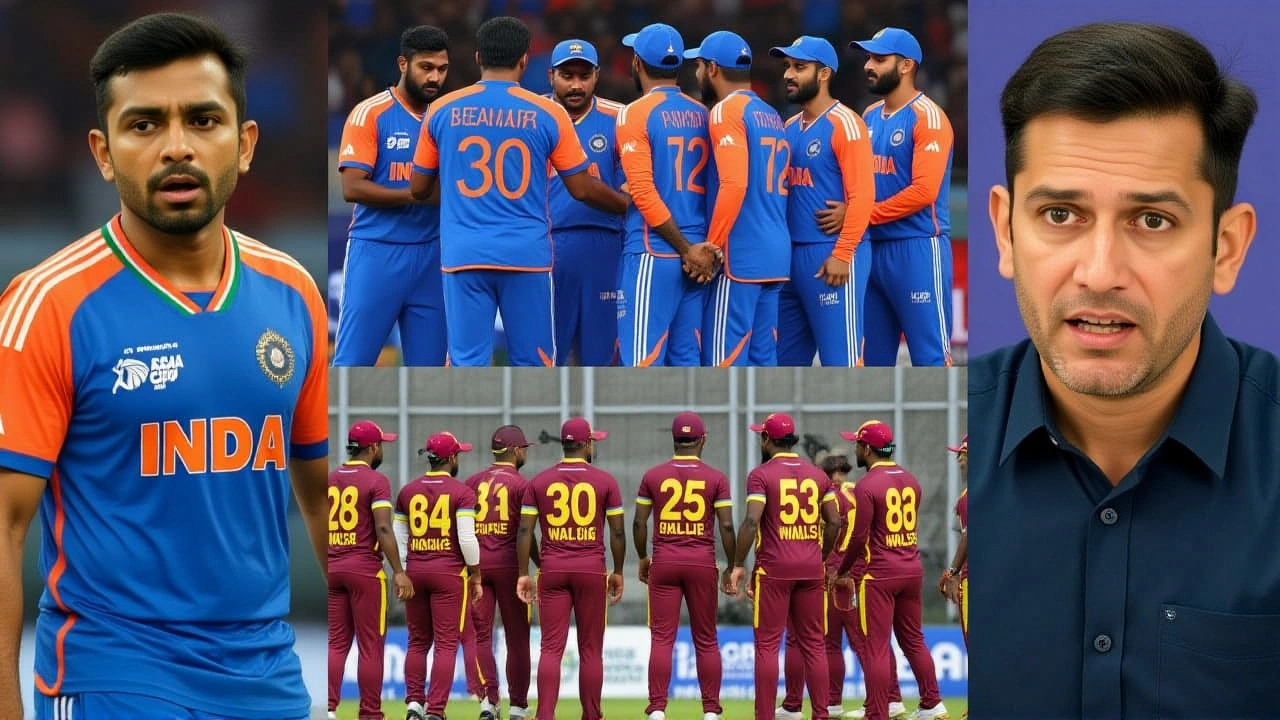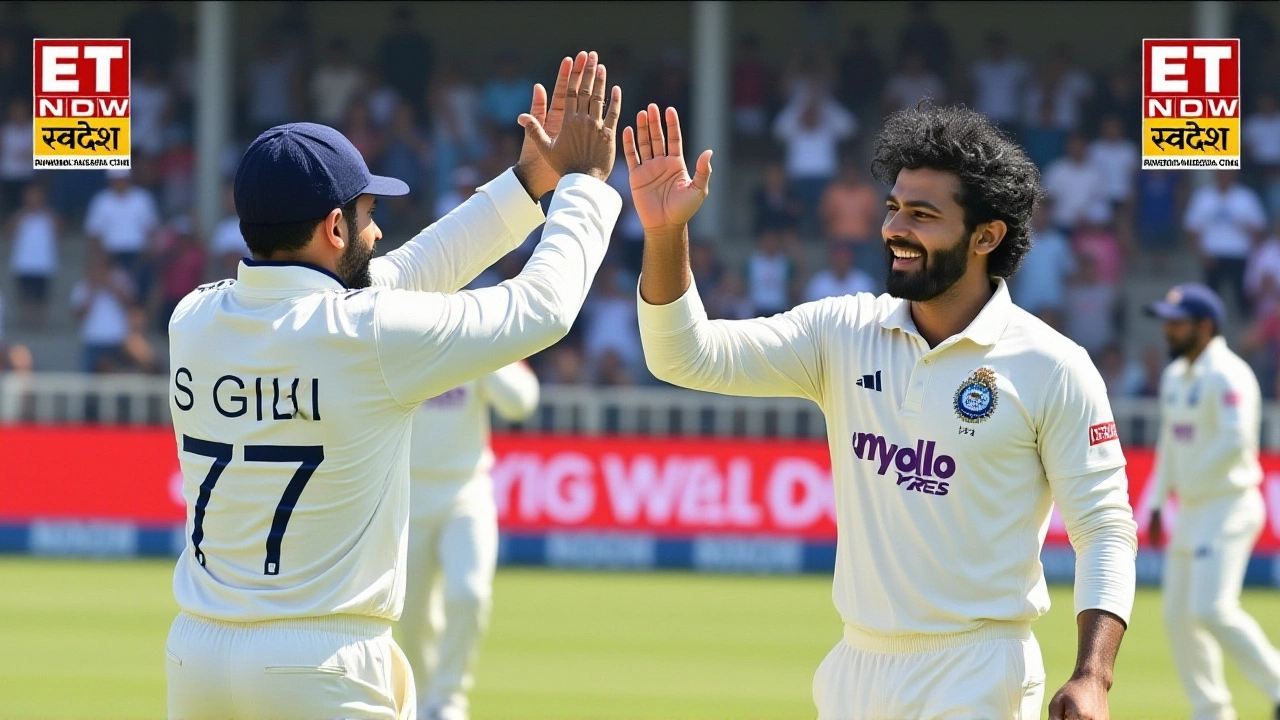
When Ravindra Jadeja, all‑rounder for India stood unbeaten on 104 runs, the first Test of the IDFC First Bank Test SeriesNarendra Modi Stadium in Ahmedabad transformed from a promising start into a crushing innings‑and‑140‑runs victory over West Indies. The win, sealed on Day 3, not only showcased India’s depth in batting, bowling and fielding, it also set a blistering tone for the home season.
Match overview
The game began with India posting a mammoth first‑innings total, powered by three centuries. While Shubman Gill and Prithvi Shaw laid the foundation, it was Jadeja’s partnership with wicket‑keeper‑batsman Dhruv Jurel that pushed the lead to 286 runs with India five wickets down. Washington Sundar, normally a strike‑bowler, was handed the bat and responded with aggressive strokes that crossed the boundary line more than a dozen times.
Batting masterclass
Jadeja’s unbeaten 104 came off 190 balls, a mix of textbook defence and daring lofted drives. "I just wanted to stay at the crease and let the bowlers work themselves out," he told the press after the innings. His fifty‑run partnership with Jurel added 151 runs for the sixth wicket – the highest sixth‑wicket stand in a Test at the stadium.
Washington Sundar’s 73 not out was equally vital. Given the license to attack, he dispatched spin with six sixes, turning a potential collapse into a statement innings. Their combined effort meant India’s total of 587/4 declared was beyond any West Indian chase.
Bowling on point
India’s attack was a textbook example of variety.
- Jasprit Bumrah opened the spell, extracting lateral movement that earned three catches behind the wicket.
- Mohammed Siraj delivered a yorker that sparked a brilliant catch by Nitish Kumar Reddy at backward point – a moment described as "electric" by commentators.
- Kuldeep Yadav claimed the key wicket of Roston Chase, finishing with figures of 3/30.
Jadeja added three wickets himself, highlighting his all‑round impact. The West Indies were bowled out for 66/5 by lunch on Day 3, with a brief flicker of resistance from Tejan Ryan, who managed a solitary boundary before falling.
Fielding highlights
Fielding often wins matches, and India’s unit proved that adage right. Nitish Kumar Reddy’s airborne catch at backward point was the day’s visual highlight – both hands gripping the ball, eyes tracking every spin, and a clean landing that drew applause from the stands.
Young batsman Yashasvi Jaiswal also contributed, taking a sharp catch to dismiss the West Indian tail‑ender. The cumulative effect of these efforts meant West Indies never settled, and every missed edge turned into a wicket.

Implications for the series
Winning by an innings and 140 runs on home soil sends a strong message to any opponent. The margin underlines the gulf in class that currently exists, but it also puts pressure on the Indian side to maintain consistency across the remaining four Tests.
Analyst Anil Kumble noted, "India have shown they can dominate with bat, ball and field. The real test will be how they handle pressure when the series tightens." The West Indies, on the other hand, will need to regroup quickly; a batting collapse of this magnitude is rare, and the coaching staff has already hinted at a possible reshuffle in the top order.
What’s next?
The next Test begins on October 11 at the Wankhede Stadium in Mumbai. India will look to build on their momentum, while the West Indies aim to salvage pride and perhaps avoid a whitewash. Fans can expect another high‑stakes encounter, especially if the Caribbean side manages to tighten their bowling and bat longer.
Frequently Asked Questions
How did Jadeja’s performance influence the outcome?
Jadeja’s unbeaten 104 not only anchored the innings but also provided a psychological edge. His partnership with Jurel added 151 runs, turning a solid total into an unassailable lead. Coupled with his three wickets, he was the pivotal all‑rounder who steered the match.
What were the key factors behind West Indies’ collapse?
A combination of disciplined Indian seam and spin, relentless fielding pressure, and early wickets set the tone. Siraj’s sharp delivery and Bumrah’s swing forced errors, while the spectacular catch by Nitish Kumar Reddy heightened the West Indian nerves, leading to a 66/5 total.
Who are the standout bowlers for India in this Test?
Jasprit Bumrah, Mohammed Siraj and Kuldeep Yadav each delivered crucial breakthroughs. Bumrah’s swing earned three catches, Siraj’s yorker‑to‑catch sequence sparked a momentum swing, and Yadav’s wrist‑spin removed the key West Indian batsman Roston Chase.
What does this result mean for the upcoming Test in Mumbai?
India enter the Mumbai Test with confidence, but the pressure to keep the dominance alive will be intense. The West Indies must overhaul their batting strategy and perhaps introduce fresh bowlers to contest the series, making the next match a critical turning point.
How did fielding impact the match outcome?
India’s fielding was decisive. The airborne catch by Nitish Kumar Reddy and the sharp reflexes of Yashasvi Jaiswal turned potential runs into wickets. Such athleticism kept the West Indian innings under constant threat, accelerating their collapse.